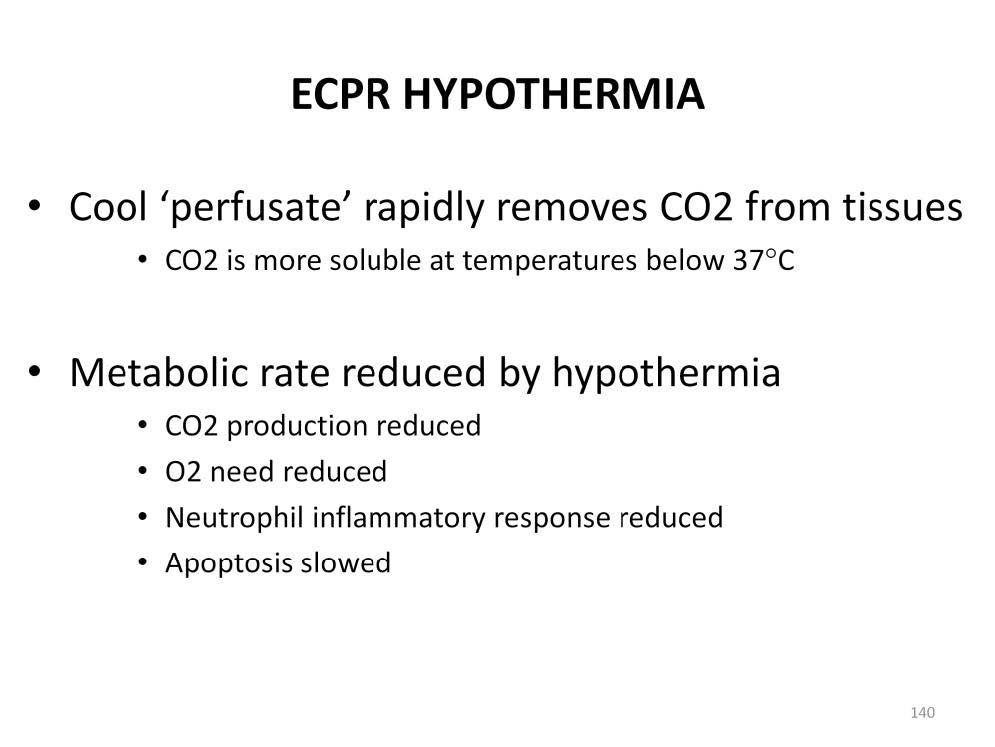
Hypothermia is used during resuscitation CPR to compensate for low oxygen delivery. However once a patient is on ECPR, oxygen delivery is no longer a problem. So why the need for hypothermia? Hypothermia is the only proven method of protection against reperfusion injury. So once ECPR is implemented, hypothermia is used to protect against too much oxygen delivery. Core cooling is the most efficient means of inducing global hypothermia. And the quickest way to implement core cooling is the use of a pump with cool perfusate. Infants and small children can be quickly cooled by starting support with the pump primed with room temperature perfusate. However larger patients may require active cooling through the oxygenator to overcome the heat sink of their bodies.
During ECPR, perfusate cooler than the body rapidly removes CO2 from the tissues because CO2 is more soluble in cooler fluids. As the cool perfusate circulates thru the patient’s body it picks up CO2 which then passes into the oxygenator where it is removed by a high sweep gas flow with a low (room air) FiO2. Additional benefits of hypothermia include slowing apoptosis and the reducing the inflammatory response.
How cold is cold enough? The American Heart Association suggests topical cooling to 32-34°C during conventional CPR. Any colder and cardiac function (should it recover) may be compromised. However with ECPR the recovery of cardiac function is not an immediate concern. Therefore cooler temperatures can be employed, if desired. The degree of hypothermia that is necessary probably depends on the level of RIP present. However that number has yet to be determined. Theoretically the farther a patient lies outside the lane, the cooler the temperature needs to be to prevent reperfusion injury.

Perfusion Theory is an educational platform for the Oxygen Pressure Field Theory (OPFT). August Krogh’s theoretical concept of the oxygen pressure field is explained and then applied to clinical applications in perfusion practice.